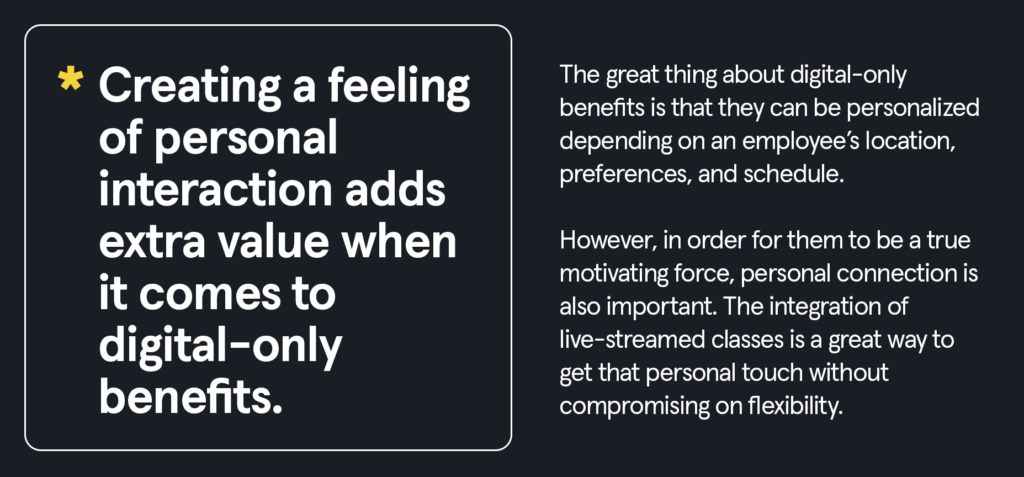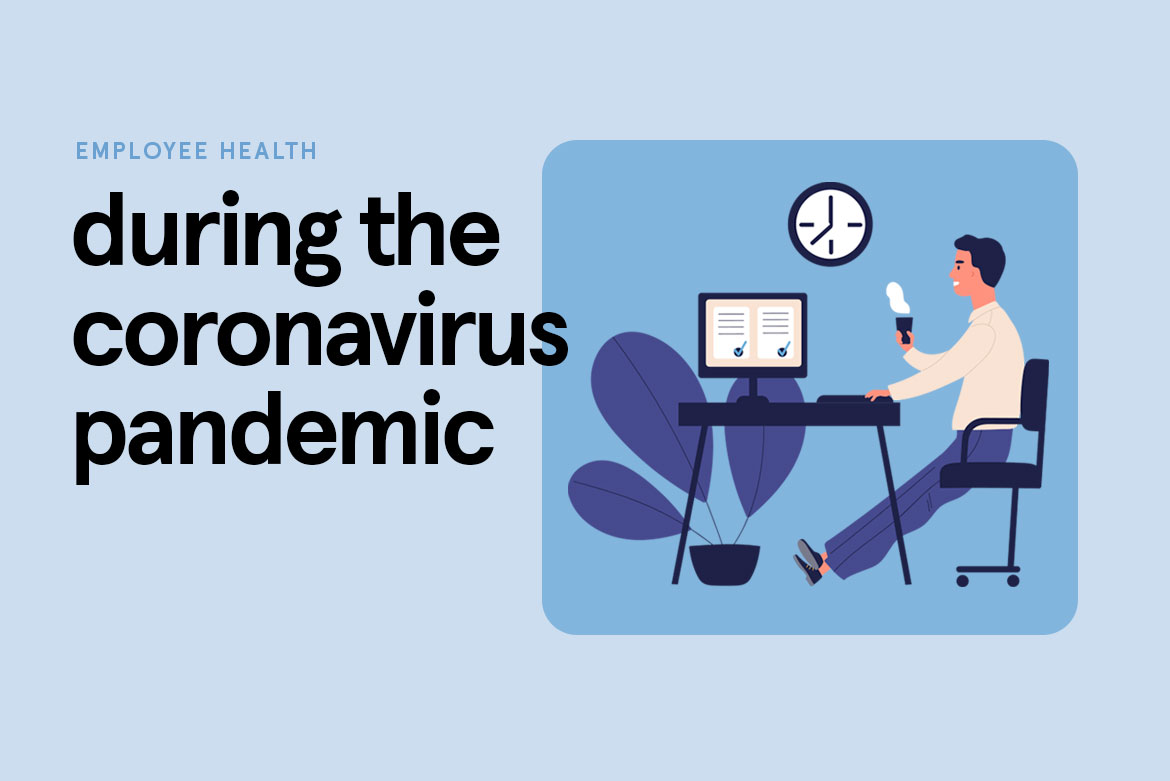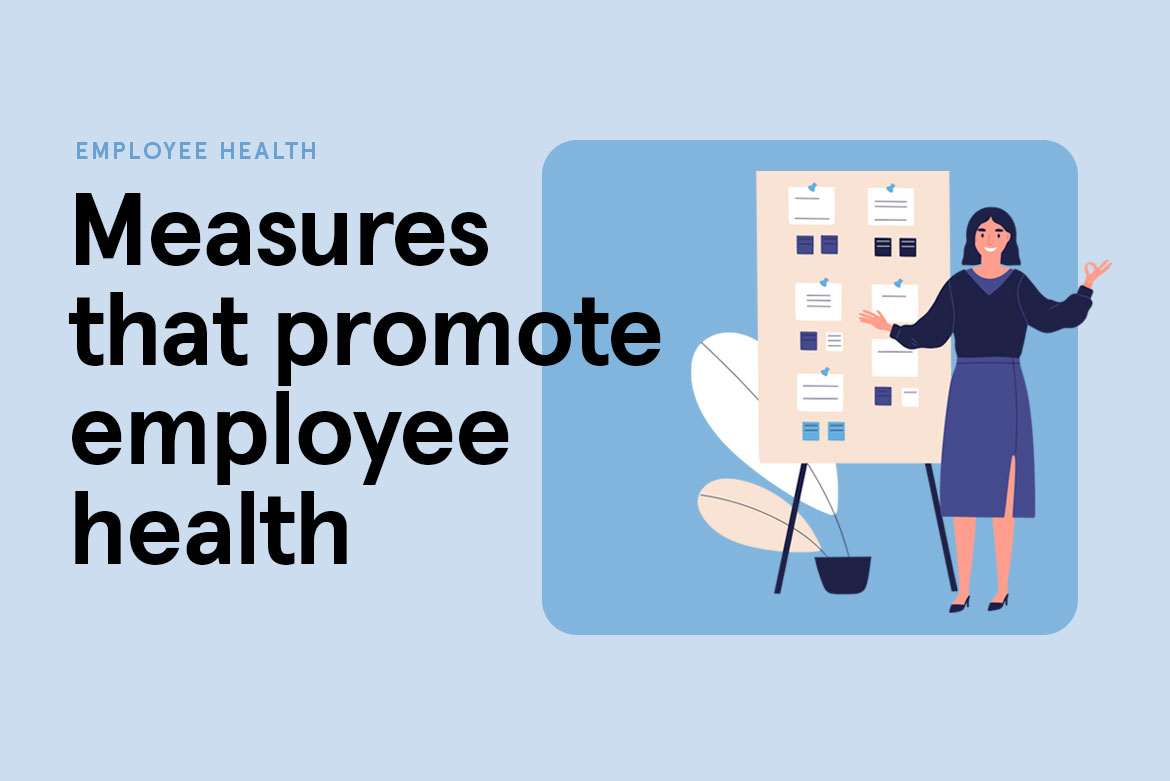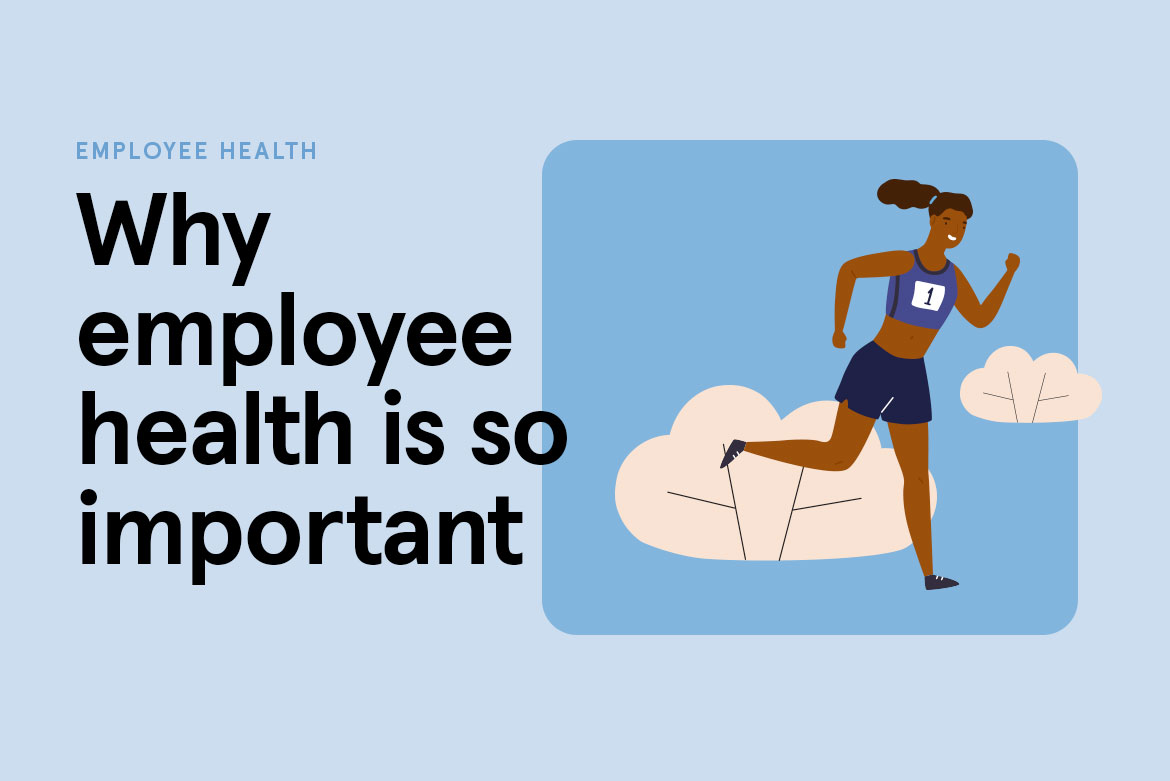Work-from-home policies combined with lockdown measures have placed incredible demands on teams. In-person meetings and coffee breaks with colleagues have all but vanished, leaving employees feeling isolated. Here, we’ll take a look at the classic strategies for promoting employee health and how they can be adapted to the current moment. We’ll also look at why employee health has become even more important – both socially and economically – as a result of the coronavirus pandemic. We’ll also explore whether mental health has moved to the forefront and what role digital benefits can play in promoting employee health.
How can strategies to promote employee health be adapted to match the current moment?
Classic initiatives and critiques
Here’s an overview of some classic employee health-related strategies and where they fall short:
- Analog health initiatives: These are “classic” health measures such as health days, fitness and relaxation programs, and stress management.
- These existing strategies for promoting employee health are based on in-person work, and are much less effectives for remote workers or those who travel frequently.
- In addition, these benefits neglect the individual needs of employees because they are tied to fixed locations and times, and the majority are offered in groups – which is not ideal in times of health concerns.
- More critiques on standard employee health benefits
- The communication channels for such initiatives are often not up to date
- The way information is imparted with traditional health programs tends to be instructional instead of informative
- Often, the focus is only on company success instead of employees
- Sports tend to prioritize competition, with few to no modern sports like Padel or HIIT
- The communication channels for such initiatives are often not up to date
How companies can adapt their employee health benefits
Here are some ideas for how to adapt your initiatives and benefits to fit the current climate:
- Prioritize corporate culture: Try positioning employee health as an important value of your corporate culture. However, it’s important to not just implement individual measures, but rather take a holistic, company-wide approach.
- Take a target-group-specific approach: Conduct surveys on employee interests and use them to gather insights.
- Develop broader, more personalized benefits: Think about what you can do on an individual level to support employees, from nutrition to sports and mental health to advice on ergonomic home workstations.
- Sports: When planning company sports, focus on fun and a wide range of choices, instead of on competition.
- Employee discussions and team chats: This is how employees escape “invisibility” when working from home. Starting conversations about work-related and non-work-related topics is hugely important for employee wellbeing.
How is the coronavirus pandemic changing the way companies approach employee health?
The global pandemic has made employee health even more important –both socially and economically. For one thing, employers have realized – particularly if COVID-19 infections occurred among their staff – that there are significant consequences when employees are suddenly unavailable or when extensive quarantine measures have to be taken.
Additionally, there are the numerous other financial and personal burdens that employees face due to the pandemic-related restrictions.
Health problems caused by new work setups: Around one in three employees have reported health problems due to non-ergonomic workspaces in their homes. Longer or atypical working hours, such as working in the evenings or on weekends, now affect around 32% of workers.

One thing is clear: employee health has fully entered the consciousness of companies, leading them to take a more targeted and holistic approach to the topic.
The mental health of employees – has it finally come to the forefront?
The pandemic has posed major challenges, particularly to the mental health of employees – and many of the issues are ongoing. In a joint study conducted by the opinion research institute YouGov and Urban Sports Club in 2021, one in four respondents said that their employees were listless or unmotivated. 21% of respondents said their employees suffered from burnout.
In addition, losing the social component of the office has hit many employees hard. They miss coffee breaks with their colleagues, team meetings and in-person discussions. What’s more, many fear the instability brought on by short-time work or unemployment and suffer from loneliness when working from home.
There is also extra psychological and emotional pressure due to the massive changes in how people work together, adapting to remote work, new workflows and processes, and the stress of home schooling for those with children.
What role can digital benefits play?
If employees work predominantly from home or on the move, digital and decentralized benefits are essential for making everyday work life less stressful and healthier.
Here are some ideas for digital employee health benefits:
- Relaxation coaching: Since stress can’t be avoided completely, strategies for dealing with it in everyday life are indispensable. Progressive muscle relaxation, mindfulness training and promoting resilience are great tools to help employees stay balanced.
- Sports and fitness: There are many options for staying in shape –even remotely. Urban Sports Club offers companies a flat monthly rate, where employees can choose between over 50 trendy sports – in-person, online, and on-demand.
- Socializing: A digital coffee or lunch break is easy to organize and offers opportunities for social exchange. Encouragement and support from the company also helps to encourage the participation of more introverted employees.
- Ergonomics for the home office: Help your employees by offering them useful tips on an ergonomic work station. Make sure you’re taking eye health into account and including practical exercises to mobilize joints and spine.
- Nutrition advice: You are what you eat. Individual nutritional analysis and practical tips for a healthy diet are essential for any employee’s wellbeing. Of course, always take vegetarian and vegan diets into account.

Outlook: What does employee health look like in remote or hybrid companies?
While we hope that lockdowns are now a thing of the past, the question of what employee health will look like in the future remains uncertain. Here’s what we’d like to see:
- Prioritizing employee health within corporate culture: Employee health requires a strong, respect-oriented foundation when it comes to how managers interact with employees -– and with each other.
- Digital benefits that also involve a personal touch – this combination is key to motivating employees over the long term.
- Integrated learning: A seamless integration of digital and on-site benefits will enable employees to prioritize their health, learn and grow.
- Support and clear regulations regarding working hours and availability: Especially with regard to digital tools, putting a clear structure in place is a great way to reduce stress.
- Clear communication and decision-making paths: Transparent processes not only provide clarity, but improve the sense of emotional support.
In the end, a strong employee health policy comes down to a seamless combination of analog and digital benefits, supplemented by clear, specific communication measures.





